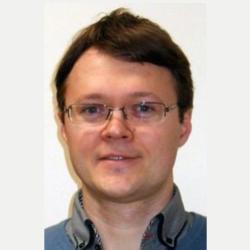Research Group
Biography
My research focuses on establishing the role of intrinsic scales of an epidemic, cropping pattern and density in epidemic spread and control. Primarily, I develop models and theoretical descriptions of the spatial spread of plant pests and viruses (e.g. oak processionary moth, cassava brown streak disease) focusing on the role of spatially explicit dynamics, spatial structure of the host landscape, stochasticity and time-variability, all of which influence the pest and pathogen distribution range, severity of an epidemic, and optimal control strategies.
Qualifications
PhD in Theoretical Physics (Condensed Matter) - Lancaster University, UK
Publications
'Phases of the excitonic condensate in two-layer graphene', (2012) Physical Review B.
Media
'Toxic oak moth threatens UK trees after failure to control its spread', (2021) New Scientist.
'APS Focus Article: Modeling the Not-So-Steady Heart', (2013) Physics.

